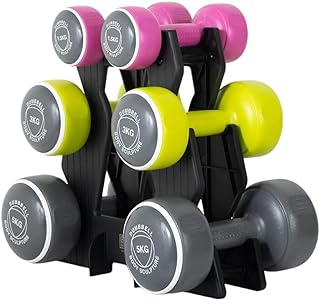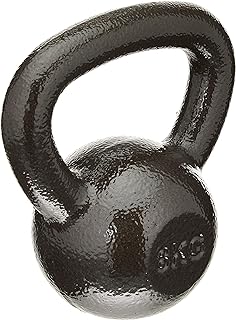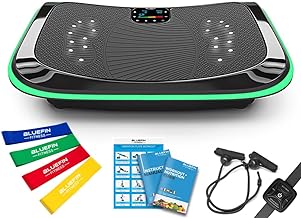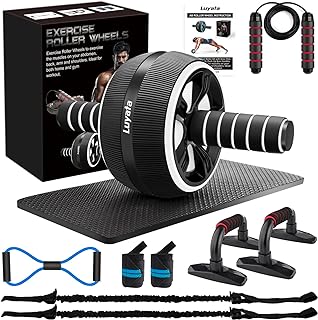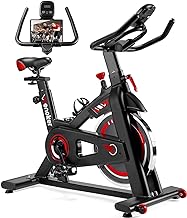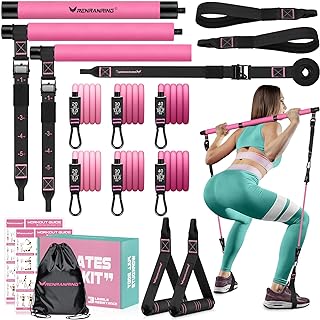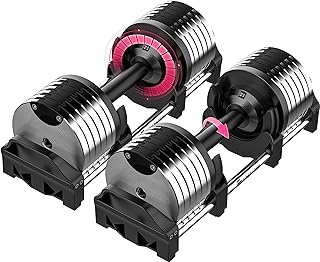How to embrace the "4 Pillars of a Healthy Lifestyle" (Nutrition, Exercise, Rest and Emotional Balance)
4 Pillars of a Healthy Lifestyle: Nutrition, Exercise, Rest & Emotional Balance: Discover the importance of nutrition, exercise, and the Scandinavian lifestyle in maintaining overall health and well-being. Learn how to plan balanced meals, find enjoyable physical activities, an...
HEALTH AND WELLBEING
Peter
5/8/202416 min read


4 Pillars of a Healthy Lifestyle
Nutrition: Fuel for the Body
In today’s fast-paced world, maintaining optimal health can be challenging. Amid the hustle and bustle, it’s crucial to remember that nutrition serves as the fuel for our bodies, enabling us to perform daily activities, stay healthy, and feel our best. Natural, whole foods are the ideal source of this nutrition, providing a balanced mix of vitamins, minerals, proteins, and other essential nutrients.
Natural foods such as fruits, vegetables, whole grains, nuts, and lean proteins are packed with nutrients that our bodies need to function efficiently. These foods are not only rich in vitamins and minerals but also provide dietary fiber and antioxidants, which play a significant role in preventing chronic diseases. Eating a varied diet of natural foods ensures that we receive a wide range of nutrients, supporting everything from immune function to bone health and cognitive performance.
However, despite our best efforts to eat a balanced diet, there are times when natural food sources alone may not suffice. This is where supplements can play a valuable role. For instance, individuals who live in areas with limited sunlight exposure might benefit from vitamin D supplements. Similarly, vegetarians or vegans may need to take vitamin B12 or iron supplements to meet their nutritional needs. Protein supplements can also be advantageous, especially for athletes or those with increased protein requirements due to physical activity or recovery from illness.
While supplements can help bridge nutritional gaps, they should not replace whole foods. Natural foods offer a complex matrix of nutrients that work synergistically, providing benefits that supplements alone cannot match. Therefore, it’s essential to use supplements wisely, ideally under the guidance of a healthcare professional, to avoid imbalances and ensure they complement a healthy diet.
In conclusion, nutrition is fundamental to our overall well-being. Prioritizing a diet rich in natural foods while incorporating supplements when necessary can help us achieve optimal health. By making informed dietary choices and understanding the role of supplements, we can fuel our bodies effectively, leading to a healthier, more vibrant life.
Welcome to Scandi Home Heaven! We believe in transparency and want to disclose that some of the links on our site are affiliate links. This means that at no additional cost to you, we may earn a commission if you click through and make a purchase. We only recommend products and services we have personally used and believe will add value to our readers.
Your support helps us continue to provide high-quality content. Thank you!
Exercise: Movement for Life
Regular Physical Activity: The Foundation of a Healthy Life
Regular physical activity is not just a component of a healthy lifestyle; it's a fundamental pillar that supports overall well-being and longevity. Far beyond the visible benefits of improved physique and weight management, consistent exercise offers a myriad of advantages that touch every aspect of human health.
Health Benefits
The impact of regular physical activity on cardiovascular health cannot be overstated. Exercise strengthens the heart muscle, improves circulation, and helps regulate blood pressure. This cardioprotective effect significantly reduces the risk of heart disease, stroke, and other cardiovascular conditions.
Musculoskeletal health also greatly benefits from regular activity. Weight-bearing exercises and resistance training not only build muscle mass but also increase bone density, reducing the risk of osteoporosis and fractures, especially in older adults. Additionally, regular movement helps maintain joint flexibility and can alleviate symptoms of arthritis.
Physical activity plays a crucial role in metabolic health. It improves insulin sensitivity, helping to prevent or manage type 2 diabetes. Regular exercise also boosts metabolism, aiding in weight management and reducing the risk of obesity-related diseases.
The benefits extend to mental health as well. Exercise stimulates the production of endorphins, often referred to as "feel-good" hormones, which can alleviate symptoms of depression and anxiety. Regular physical activity has been shown to improve mood, reduce stress, enhance cognitive function, and even lower the risk of neurodegenerative diseases like Alzheimer's.
Types of Physical Activity
Aerobic exercises, such as brisk walking, jogging, cycling, or swimming, are excellent for cardiovascular health and endurance. The Centers for Disease Control and Prevention (CDC) recommends at least 150 minutes of moderate-intensity aerobic activity or 75 minutes of vigorous-intensity aerobic activity per week for adults.
Strength training, including weightlifting or bodyweight exercises, is crucial for maintaining muscle mass and bone density. The CDC suggests muscle-strengthening activities involving all major muscle groups at least twice a week.
Flexibility exercises, like stretching or yoga, help maintain range of motion and prevent injuries. Balance exercises, particularly important for older adults, can reduce the risk of falls.
Incorporating Activity into Daily Life
While structured exercise routines are beneficial, physical activity can be seamlessly integrated into daily life. Taking the stairs instead of the elevator, walking or cycling for short trips instead of driving, or doing active chores like gardening all contribute to overall activity levels.
Overcoming Barriers
Common barriers to regular physical activity include lack of time, motivation, or access to facilities. However, these can be addressed through strategies like scheduling exercise as a non-negotiable part of the day, finding activities that are enjoyable, or exploring home-based workout options.
The Role of Technology
Modern technology offers numerous tools to support physical activity. Fitness trackers and smartphone apps can monitor progress, provide motivation, and offer guided workouts. Online communities and virtual classes have made expert instruction and peer support more accessible than ever.
Conclusion
Regular physical activity is not just about looking good or achieving a certain body type. It's a powerful tool for disease prevention, mental well-being, and overall quality of life. By making physical activity a consistent part of daily routines, individuals can significantly improve their health outcomes and enjoy a more vibrant, energetic life. Remember, it's never too late to start, and even small increases in activity can yield substantial benefits. As always, it's advisable to consult with a healthcare provider before starting any new exercise regimen, especially for those with pre-existing health conditions.
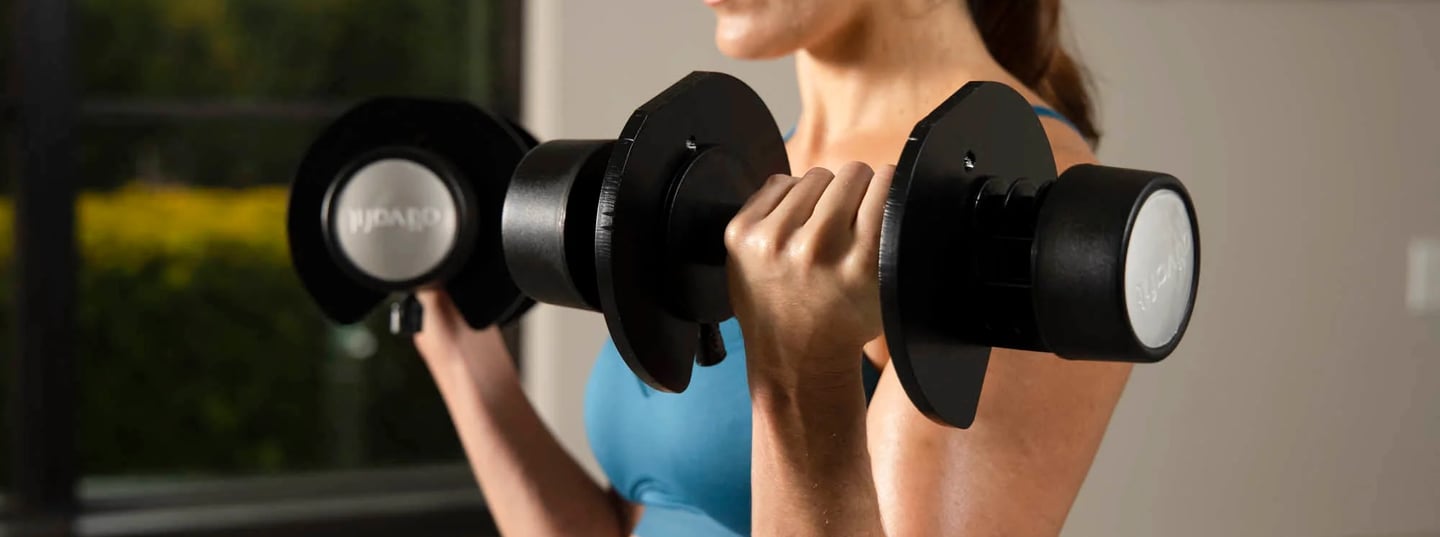

Rest: The Body's Rejuvenation
Rest, particularly quality sleep, is crucial for maintaining overall health and well-being.
In our increasingly hectic lives, rest often becomes an afterthought, yet it is a fundamental pillar of health and well-being. Rest is not merely a passive activity; it is a critical process where the body and mind rejuvenate, repair, and prepare for the challenges ahead. Prioritizing rest is essential for optimal health, and utilizing various tools and techniques can help achieve deep relaxation and de-stress effectively.
First and foremost, creating a restful environment is crucial. A comfortable, quiet, and dark bedroom sets the stage for quality sleep. Investing in a good mattress and pillows can make a significant difference in sleep quality. Additionally, maintaining a consistent sleep schedule, even on weekends, helps regulate the body’s internal clock, making it easier to fall asleep and wake up.
Mindfulness and relaxation techniques are powerful tools for de-stressing. Practices such as meditation, deep breathing exercises, and progressive muscle relaxation can calm the mind and reduce stress levels. Apps like Headspace and Calm offer guided sessions that can be particularly helpful for beginners. Engaging in these practices regularly can enhance mental clarity, improve mood, and promote better sleep.
Physical activity also plays a vital role in achieving restful sleep. Regular exercise, whether it’s a brisk walk, yoga, or strength training, helps reduce stress hormones and promotes the production of endorphins, the body’s natural mood lifters. However, it’s best to avoid vigorous exercise close to bedtime, as it can be stimulating.
Incorporating technology wisely can further aid in rest and relaxation. White noise machines or apps can mask disruptive noises, while sleep tracking devices provide insights into sleep patterns, helping identify areas for improvement. Blue light filters on electronic devices can also reduce the impact of screen time on sleep quality.
Finally, engaging in calming activities before bedtime, such as reading a book, taking a warm bath, or listening to soothing music, can signal the body that it’s time to unwind. Establishing a bedtime routine can create a sense of calm and help the body transition into a restful state.
In conclusion, prioritizing rest is essential for the body’s rejuvenation. By creating a conducive sleep environment, incorporating relaxation techniques, engaging in regular physical activity, and utilizing supportive tools, we can enhance our ability to de-stress and achieve optimal rest. Embracing these practices can lead to improved overall health, increased productivity, and a more balanced life.
We are using and can recommend the following products:


Techniques for Stress Reduction
Stress is an inevitable aspect of life, but chronic stress can have serious health consequences. Managing stress effectively is essential for overall well-being.
Understanding Different Types of Stress
Not all stress is detrimental. Positive stress, known as eustress, can promote growth and improvement. For instance, the stress from weight lifting or tackling a challenging scientific problem can be beneficial.
However, chronic distress is harmful. This type of stress activates the body's hypothalamus-pituitary-adrenal axis, triggering the release of adrenaline (epinephrine). This response raises blood pressure and blood sugar levels, preparing the body for a perceived threat. Historically, this reaction was useful for immediate dangers like facing a wild animal. Today, chronic stress from modern issues such as health concerns can lead to serious conditions like heart disease, diabetes, cancer, and premature death. In essence, chronic stress can be lethal.
Addressing Serious Stressors
For those dealing with severe issues such as poverty, medical illness, the loss of a loved one, or major depression, professional help is highly recommended. These situations require substantial support and intervention.
For individuals facing the more routine stresses of daily life, the following strategies can help manage stress:
Effective Stress Management Techniques
Regular Physical Activity: Physical exercise is a powerful stress reliever. Incorporating early morning sunlight into your routine can further enhance mental well-being. Exercise not only improves physical health but also boosts mood and reduces anxiety.
Relaxation Techniques: Methods such as deep breathing, meditation, and progressive muscle relaxation can significantly reduce stress. Initially skeptical, I found that even five minutes of daily meditation over several months helped me control my emotions better. While I’m generally not prone to outbursts, I became more composed during situations that would typically provoke anger.
Time Management Skills: Prioritize tasks and delegate when possible. Remember, you can do anything but not everything. Ensure that your schedule includes "me time." If you don’t prioritize your own well-being, no one else will.
Joyful Activities: Engaging in activities that bring joy is essential. Whether you’re an introvert who loves reading or an extrovert eager to socialize, find what energizes you and make time for it. Regularly incorporating joyful activities into your schedule can significantly reduce stress.
Giving Back to Others: Helping those in need can dramatically improve your stress levels. Perspective shifts when you volunteer with the homeless or at a pediatric cancer ward. The stress of buying a bigger house or college applications becomes less significant when you see others facing far greater challenges. Gratitude and giving back are powerful stress reducers.
By integrating these techniques into your daily routine, you can better manage stress and maintain a healthy mental and emotional balance.
Integrating the Pillars of a Healthy Lifestyle: Nutrition, Exercise, Rest and Emotional Balance
Achieving a healthy lifestyle involves balancing these three pillars
Achieving a healthy lifestyle consists of balancing these three pillars. Here are some tips for integrating nutrition, exercise, and rest into your daily routine:
Meal Planning:
Create a balanced, healthy meal plan by focusing on variety and nutrition. Start with a base of whole foods: fruits, vegetables, whole grains, lean proteins, and healthy fats. Plan meals around a colorful plate, ensuring each meal contains a mix of macronutrients. Include snacks like nuts, yogurt, or fruit. Prepare meals ahead of time to avoid processed options. Stay hydrated with water and limit sugary drinks. Adjust portion sizes according to your nutritional needs and activity level. Finally, rotate different foods weekly to avoid monotony and ensure a broad intake of essential vitamins and minerals.
Exercise Routine:
Find physical activities you enjoy and schedule regular workout times.
A beginner's exercise routine should be simple, enjoyable, and progressive. Start with a warm-up: 5-10 minutes of light cardio like walking or jogging in place. Follow with a mix of cardio and strength training exercises.
Cardio (20 minutes):
Brisk walking or jogging
Cycling or using a stationary bike
Dancing or aerobic exercises
Strength Training (20 minutes):
Bodyweight exercises: squats, lunges, push-ups, and planks
Light weights or resistance bands for bicep curls, triceps extensions, and shoulder presses
Finish with a cool-down: 5-10 minutes of stretching, focusing on major muscle groups to improve flexibility and reduce soreness. Aim for at least 3-4 sessions per week, gradually increasing intensity and duration as fitness improves. Always listen to your body and rest when needed.
Sleep Schedule:
A consistent bedtime routine can significantly improve sleep quality. Follow these steps:
Set a Regular Sleep Schedule: Go to bed and wake up at the same time every day, even on weekends, to regulate your body clock.
Create a Relaxing Pre-Sleep Ritual:
Wind Down: Spend 30-60 minutes before bed doing calming activities such as reading, listening to soft music, or taking a warm bath.
Limit Screen Time: Turn off electronic devices at least an hour before bedtime to reduce blue light exposure.
Optimize Your Sleep Environment:
Keep it Cool and Dark: Maintain a comfortable temperature and use blackout curtains to minimize light.
Comfortable Bedding: Ensure your mattress and pillows provide adequate support.
Limit Stimulants: Avoid caffeine, nicotine, and heavy meals in the evening. Opt for a light snack if needed.
Mindfulness Practices: Incorporate deep breathing exercises, meditation, or gentle yoga to relax your mind and body.
Stay Consistent: Stick to your routine to train your body and mind to recognize when it’s time to sleep.
By prioritizing nutrition, exercise, and rest, you can support your body’s natural functions, enhance your mental health, and enjoy a more vibrant, healthy life. These pillars are interconnected, each supporting and enhancing the others, forming a holistic approach to wellness that can lead to long-term health and happiness.
Exercise equipment a short review
Stationary bikes, also known as exercise bikes or indoor cycling bikes, are fitness machines that simulate the experience of riding a bicycle while remaining in one place. They provide an effective cardiovascular workout in the comfort of your home or gym.
Low-impact exercise: Stationary bikes put minimal stress on your joints, making them ideal for people with joint issues or those recovering from injuries.
Suitable for all fitness levels: You can easily adjust the intensity of your workout, making stationary bikes appropriate for beginners and advanced athletes alike.
Convenient indoor option: No need to worry about traffic, road conditions, or outdoor safety concerns.
Year-round use: Weather doesn't affect your ability to exercise on a stationary bike.
Cardiovascular health: Regular use can improve heart and lung function, lower blood pressure, and reduce the risk of heart disease.
Weight loss: A typical 30-minute moderate-intensity session can burn 200-300 calories, depending on your weight and intensity.
Muscle strengthening: Primarily works the quadriceps, hamstrings, calves, and glutes. It also engages your core for stability.
Multitasking: Many people find it easy to read, watch shows, or even work on a laptop while cycling.
Customizable workouts: Many modern stationary bikes come with programmable resistance levels, pre-set workouts, and even virtual riding experiences. "The Importance of Cardio in a Balanced Fitness Routine: A Guide for Beginners"
Kettlebells, a distinctive type of weight with a rich history, have become a staple in the fitness industry. Originating in Russia in the 18th century, kettlebells were initially used as counterweights for measuring crops. Over time, their utility was recognized in physical training, leading to their adoption by the Russian military and athletes. The unique design of kettlebells, with a handle attached to a cast-iron ball, sets them apart from other weights like dumbbells and barbells. This design allows for a wider range of motion and dynamic exercises, enhancing functional fitness.
One of the key benefits of incorporating kettlebells into workout routines is their ability to improve overall strength. Unlike traditional weights that focus on isolated muscle groups, kettlebell exercises engage multiple muscles simultaneously, promoting whole-body strength. Additionally, the dynamic nature of kettlebell movements enhances flexibility and joint stability, reducing the risk of injuries. The cardiovascular benefits of kettlebell training are noteworthy as well; high-intensity kettlebell workouts can significantly elevate heart rate, improving cardiovascular endurance.
The versatility of kettlebells makes them suitable for various fitness levels and goals, from beginners looking to improve general fitness to advanced athletes seeking to enhance performance. The growing popularity of kettlebells is evident in various fitness communities, including CrossFit, functional training, and group fitness classes. Their inclusion in diverse workout routines underscores their effectiveness and adaptability. As more people recognize the comprehensive benefits of kettlebell training, their presence in gyms and home workout setups continues to expand, solidifying their status as a quintessential fitness tool. Here are some dedicated Kettlebell exercises on our Blog:
In the realm of fitness, adjustable dumbbells have emerged as a game-changer, particularly for beginners embarking on their fitness journey. Unlike traditional dumbbells, adjustable dumbbells allow users to modify the weight easily, making them a versatile and efficient choice for various exercises. This flexibility is especially beneficial for beginners, who can gradually increase the weight as they build strength and confidence.
One of the primary advantages of adjustable dumbbells is their cost-effectiveness. Instead of purchasing a complete set of traditional dumbbells, which can be both expensive and space-consuming, a single pair of adjustable dumbbells can cater to a wide range of weights. This makes them an ideal investment for those who are just starting out and might not yet be committed to a long-term fitness regimen.
Adjustable dumbbells are also incredibly convenient. With just a quick adjustment, users can switch between different weights, thereby accommodating various exercises and targeting different muscle groups. This ease of use ensures that beginners can maintain momentum during their workouts, reducing the risk of losing focus or motivation.
Please read our Blog with a 3Days per week Dumbbell exercise routine for beginners.
Rowing machines, also known as ergometers or indoor rowers, simulate the action of watercraft rowing for fitness and training purposes. They provide a full-body workout that engages multiple muscle groups simultaneously.
Key advantages of rowing machines include:
Low-impact, full-body workout: Rowing engages about 86% of your muscles, working your legs, core, back, arms, and shoulders simultaneously. Unlike high-impact exercises like running, rowing is gentle on your joints, making it suitable for people of all ages and those with joint issues.
Excellent cardiovascular exercise: Rowing elevates your heart rate and improves cardiovascular endurance. It can be as effective as running or cycling for improving heart and lung function, but with less stress on your joints.
Builds strength and endurance: The resistance in rowing helps build muscular strength, particularly in your back, legs, and arms. It also improves muscular endurance due to the repetitive nature of the exercise.
Burns calories efficiently: Rowing is a highly efficient calorie-burning exercise. Depending on intensity, you can burn 400-800 calories per hour, making it excellent for weight management and fat loss.
Improves posture and core stability: The rowing motion requires engagement of your core muscles and promotes proper spinal alignment. Regular rowing can help improve posture and reduce back pain.
Suitable for all fitness levels: Rowing machines allow users to adjust resistance and pace, making them appropriate for beginners and advanced athletes alike. You can easily tailor your workout to your fitness level.
Compact and convenient for home use: Many rowing machines are designed to be space-efficient, often with the ability to fold or stand upright for storage. This makes them a practical option for home gyms, even in smaller spaces.
Low risk of injury compared to some other exercises: The smooth, controlled motion of rowing, combined with its low-impact nature, means there's a lower risk of injury compared to high-impact or complex movement exercises. Proper form is still important to prevent strain. Please click here to see our blog on "The Importance of Cardio in a Balanced Fitness Routine: A Guide for Beginners"
Resistance bands are versatile elastic strips or tubes used for strength training and physical therapy. Here's a brief introduction and some key advantages:
Resistance bands provide constant tension throughout exercises, offering a unique form of resistance compared to free weights. They're lightweight, portable, and suitable for users of all fitness levels.
Advantages:
Versatility: Can be used for various exercises targeting different muscle groups
Portability: Easy to pack and use anywhere
Low cost: More affordable than most gym equipment
Adaptability: Resistance can be adjusted by changing band tension or using multiple bands
Joint-friendly: Provides smooth resistance, reducing stress on joints
Functional training: Allows for movements that mimic real-life activities
Space-efficient: Ideal for home workouts in small spaces
Vibration plates are fitness devices that use high-frequency vibrations to stimulate muscle contractions. When you stand, sit, or exercise on the vibrating platform, your muscles contract and relax multiple times per second1. Here are some benefits of using vibration plates:
Enhanced Muscle Growth: Vibration plates can increase muscle contraction, potentially improving muscle mass and strength in less time.
Improved Warm-ups and Cool-downs: These platforms promote blood circulation, making warm-ups and cool-downs more effective and relaxing.
Potential Aid in Weight Loss: When combined with a healthy diet and exercise, vibration plate training may contribute to weight loss.
Stability Improvement for Older Adults: Whole-body vibration training can enhance stability and strengthen muscles in older adults.
Relief from Back Pain and Muscle Fatigue: Vibration plates activate stabilizing muscles, which can benefit those with back pain.
Dumbbells are versatile fitness tools that offer numerous benefits for strength training and overall fitness. Here’s a brief introduction and some advantages of using dumbbells:
Improved Muscle Strength and Tone: Dumbbells engage multiple muscle groups, helping you build strength and definition.
Enhanced Functional Fitness: They allow natural movement patterns, promoting better coordination and balance.
Increased Calorie Burn: Strength training with dumbbells boosts metabolism and aids in weight loss.
Better Range of Motion: Dumbbell exercises often involve a wider range of motion than machines.
Identifies and Eliminates Strength Imbalances: Using dumbbells helps address muscle imbalances.
More Freedom of Movement: You can perform various exercises without being restricted by fixed equipment.
Improved Safety (Especially When Training Alone): Dumbbells reduce the risk of injury compared to heavy machinery
Please read our Blog with a 3Days per week Dumbbell exercise routine for beginners.
The ab wheel, also known as an exercise wheel or ab roller, is a simple yet effective fitness tool for strengthening the core muscles. Here are some benefits of using the ab wheel:
Core Strength: Ab wheel exercises engage the entire core, including the upper, lower, and side muscles. They help build stability and strength in your midsection.
Muscle Engagement: Unlike traditional crunches, ab wheel rollouts work multiple muscles simultaneously, including the obliques, rectus abdominis, and lower back muscles.
Improved Posture: A strong core supports good posture and overall muscle coordination.
Enhanced Sports Performance: Strengthening your core with ab wheel exercises can translate to better performance in other exercises and sports123.
Remember to maintain proper form and technique to avoid strain or injury. Happy rolling!
Welcome to my world of creative expression! Based in the heart of Copenhagen but reaching customers worldwide, I bring over 500 unique designs to life on t-shirts, hoodies, mugs, and more. Passionate about graphic design, I combine Nordic inspiration with global appeal to offer stylish, high-quality merchandise through Shopify/Printify and Teepublic. Whether you’re looking for a cozy sweatshirt or a personalized Coffee Mug, each product is crafted to make everyday moments extraordinary.
Explore, express, and enjoy!
Advertisment for our Merchndise Shop


